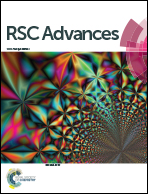Synergistic effects of magainin 2 and PGLa on their heterodimer formation, aggregation, and insertion into the bilayer
Abstract
We performed coarse-grained molecular dynamics simulations of antimicrobial peptides PGLa and magainin 2 in lipid bilayers. PGLa peptides or mixtures of PGLa and magainin 2 were initially widely spaced or clustered above the bilayer surface with different heterodimeric orientations (parallel or antiparallel). Simulations show that the presence of magainin 2 promotes more tilting and insertion of PGLa into the bilayer, indicating the synergistic effect. Magainin 2 interact with lipid headgroups and thus stay horizontally on the bilayer surface, while PGLa insert into the bilayer, leading to more tilted conformation, in agreement with recent NMR experiments. In particular, for the systems with the initially antiparallel-oriented heterodimers or with the neutrally mutated magainin 2, much fewer parallel heterodimers form, and PGLa peptides are less tilted and inserted, indicating that the formation of parallel heterodimers is important for the PGLa insertion, as suggested in experiments. Peptides aggregate in the mixture of PGLa and magainin 2, but not in the system without magainin 2, indicating that magainin 2 induce the peptide aggregation, which is required for the pore formation. These simulation findings agree with the experimental observations of the heterodimer formation as well as different positions of PGLa and magainin 2 in the bilayer, which seem to conflict. These conflicting results can be explained by the synergistic mechanism that magainin 2 form parallel heterodimers with PGLa and induce the aggregation of heterodimers, leading to the formation of pores, where magainin 2 tend to interact with the bilayer surface, while PGLa are tilted and inserted into the hydrophobic region of the bilayer.


 Please wait while we load your content...
Please wait while we load your content...